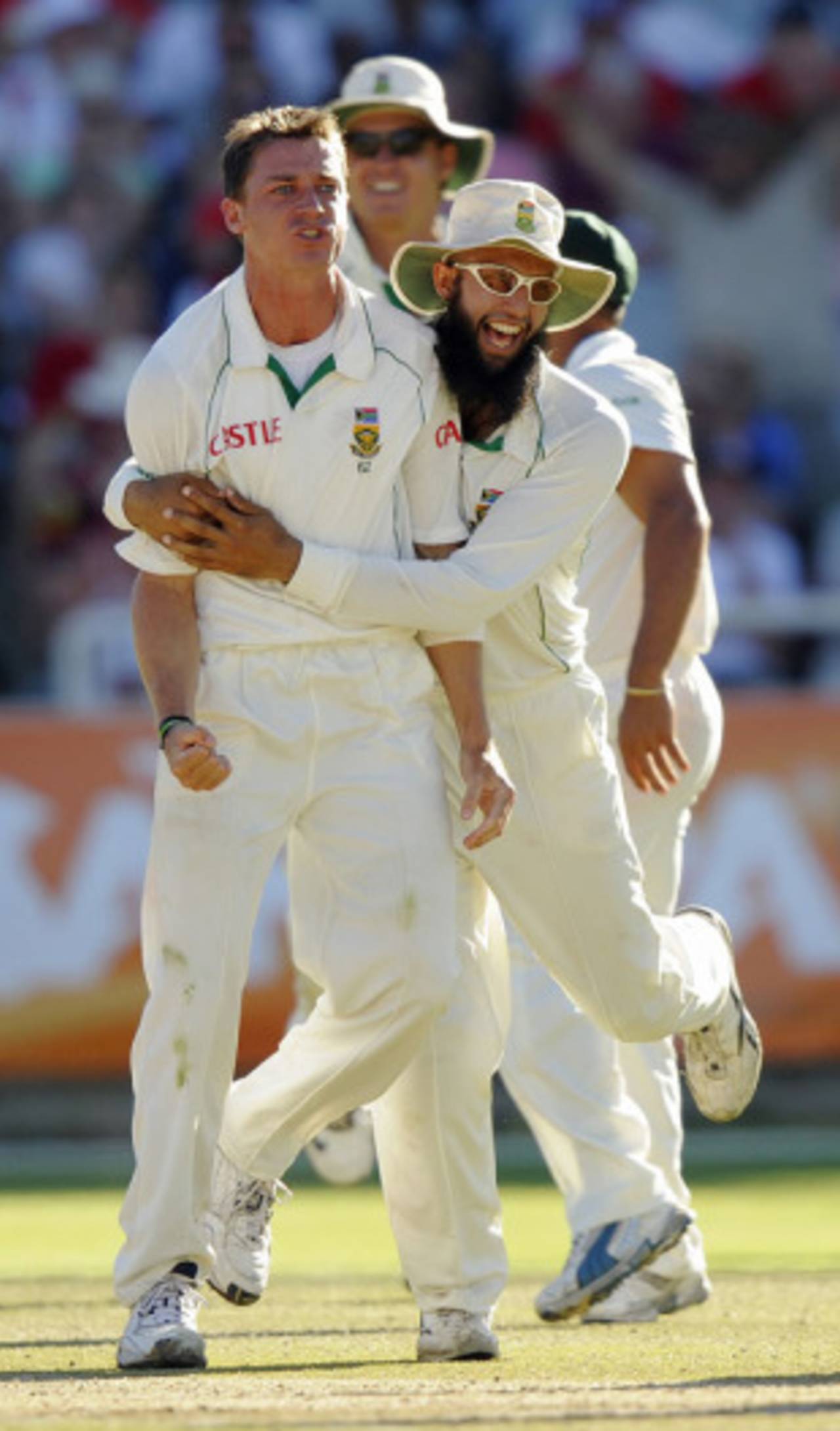This has almost been a Test match in reverse. Wicket-taking has become harder work the longer the match had progressed. When seven batsmen fell during the morning session on the second day, the game was moving towards a rapid conclusion, but since then bowlers on both sides have had to labour for their success.
When England were 101 without loss after tea on the fourth evening, Graeme Smith would doubtless have been getting a little twitchy. There wasn't any movement for his quicks and Paul Harris was being targeted by Alastair Cook. The expectation had been that Dale Steyn and Morne Morkel, who shared nine wickets in the first innings, would do the job for South Africa, but early wickets simply hadn't arrived.
However, a bowling attack should always be about more than two personnel. The greatest attack of recent times, the Australia team which dominated the game for more than a decade, built its power on Glenn McGrath and Shane Warne, but they had a potent support act behind them. Paul Reiffel, Jason Gillespie, Brett Lee, Stuart MacGill and Stuart Clark were just some of the names who supplemented the awesome skill of the main men.
There is no comparison between this South Africa attack and what Australia boasted during that period, but the principle remains the same. Steyn and Morkel, for all their pace and hostility, can't be the only ones to carry the team's hopes. They are likely to have more match-winning performances in them than other names, but they can't do it alone.
This is a transitional phase for South Africa's bowling stocks now that Makhaya Ntini has been left out, and it's all about finding a new combination. Friedel de Wet is getting first dibs on securing a long-term role and only time will tell whether he is the best option. At 29, he's a few years older than is ideal to make a start at international level, but it worked for Clark for three heady years. So far he has let nobody down.
His final-afternoon display at Centurion came within a whisker of giving South Africa the series lead, but he had to make way for Steyn's return at Durban when Ntini was retained. During this match he has bustled in hard without much reward, but has played a role in keeping the pressure on England's batsman which has led to a number of loose dismissals.
Reward eventually came his way when Cook's top-edge was taken by Mark Boucher. It wasn't the best ball de Wet had bowled - Cook had been dispatching similar deliveries through midwicket all through his innings - but bowlers often go unrewarded for good deliveries.
De Wet immediately settled into a testing rhythm and thought he'd trapped Kevin Pietersen lbw second-ball, only to find out Daryl Harper had missed a huge inside-edge. He also beat Jonathan Trott's edge and he appears to be a bowler who is a far more dangerous prospect once he has the confidence of a wicket to fall back on.
"I thought he bowled really well, wicket-to-wicket, and got it to reverse a little, in fact angle in, and he made the batters play at every ball which was key at that stage," AB de Villiers said. "And with Harris keeping the runs down it was great, so I think he's done his job pretty well. There were no freebies and he got a wicket for us."
Smith used his bowling resources cleverly and for large periods ensured that at least one of Steyn and Morkel operated with his the back-up options of de Wet, Harris and Jacques Kallis. However, even when both main strikers were grazing in the outfield, the hosts maintained control of the run-rate.
"If you push hard and keep the runs down, something was bound to happen and before we knew it we had three wickets," de Villiers said. "We got a bit of momentum behind us, even though they'd had a 100-run partnership."
This is an important innings for Harris who has come under pressure after failing to provide control in Durban or during the first innings here, which was such a key part of South Africa's success in 2008, but he responded well with the vital wicket of Strauss. The day was capped off when Steyn showed his striking capacity by removing Pietersen for 6.
"We know he can score big hundreds and it's a massive wicket," de Villiers said. "Strauss's and Pietersen's wickets were very key for us. It's important to get the two out, and we managed to do that with good bowling and good pressure."
Andrew McGlashan is assistant editor of Cricinfo
